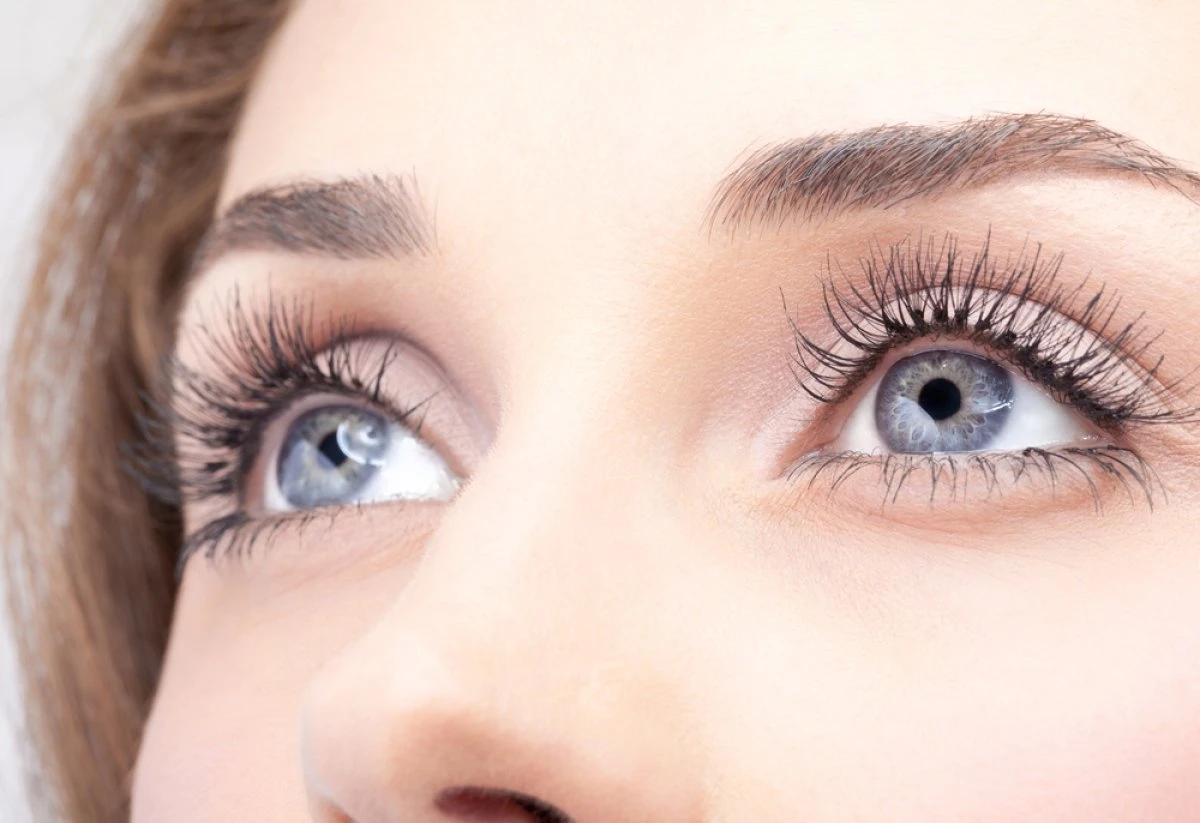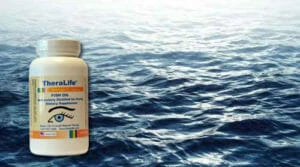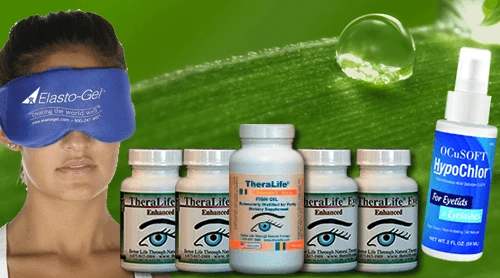TheraLife’s fish oil supplements, rich in omega-3 fatty acids like EPA and DHA, effectively alleviate dry eyes by reducing inflammation and promoting tear film stability.
A daily intake of 1,000 to 3,000 mg is generally recommended. These supplements enhance tear production and minimize the need for artificial tears.
TheraLife ensures high-quality, molecularly distilled fish oil for purity and optimal absorption, ideally taken with meals.
Individual responses may vary, so consulting a healthcare provider for personalized dosage is advised.
Explore TheraLife’s specialized products and strategies to maximize the benefits of fish oil for your eye health journey.
100% Pure Fish Oil For Dry Eyes- TheraLife
Add To Cart
Key Takeaways
- Theralife’s Fish Oil reduces eye inflammation and enhances tear production, alleviating dry eye symptoms.
- Recommended dosage ranges from 1,000 to 3,000 mg of combined EPA and DHA daily.
- Omega-3s stabilize the tear film by improving oil production from meibomian glands.
- Theralife offers high-quality, molecularly distilled fish oil to ensure purity and effective relief from dry eyes.
- Consult a healthcare provider to determine an optimal, personalized omega-3 dosage for eye health using Theralife products.
Understanding Omega-3 Fatty Acids
Understanding omega-3 fatty acids is fundamental for appreciating their role in eye health. These essential fats, primarily consisting of alpha-linolenic acid (ALA), eicosapentaenoic acid (EPA), and docosahexaenoic acid (DHA), are critical for maintaining overall health.
EPA and DHA, mainly found in fish and seafood, exhibit significant anti-inflammatory properties and are indispensable for brain function and cardiovascular integrity.
For ideal eye health, EPA and DHA are particularly essential. These omega-3 fatty acids are integral components of cell membranes in the retina, contributing to retinal function and potentially preventing age-related vision loss.
Recommended daily intake of combined EPA and DHA is generally between 250 to 500 mg for adults. This guarantees that your body gets sufficient amounts to support not only systemic health but also ocular health.
Plant-based sources like flaxseeds and chia seeds provide ALA, but your body converts less than 15% of ALA to EPA and DHA, making direct consumption of EPA and DHA more efficient.
Given their significant role, incorporating these omega-3 fatty acids into your diet is paramount for maintaining eye health and overall well-being.
Benefits of Fish Oil for Eye Health
You’ll find that fish oil, abundant in omega-3 fatty acids DHA and EPA, can greatly reduce eye inflammation due to its anti-inflammatory properties.
By enhancing tear production and stability, regular intake of fish oil may alleviate dry eye symptoms. Evidence suggests that incorporating fish oil into your diet or through supplements can markedly improve the quality of your tear film, potentially minimizing the reliance on artificial tears.
Additionally, fish oil supplements are molecularly distilled, ensuring the removal of contaminants like mercury and PCBs, which further supports eye health.
Reducing Eye Inflammation
Many find relief from dry eye symptoms through the anti-inflammatory properties of fish oil, which is rich in omega-3 fatty acids like EPA and DHA. These essential fatty acids play a significant role in reducing inflammation, particularly within the delicate structures of the eye.
Omega-3 fatty acids have been shown to improve tear film stability and reduce inflammation in the meibomian glands, which are essential for maintaining tear quality. Additionally, fish oil is molecularly distilled and third-party tested for purity, ensuring the highest standard of supplementation for eye health.
Research supports the anti-inflammatory benefits of omega-3 supplementation. For instance, individuals with higher omega-3 intake had a 17% lower risk of developing dry eye symptoms. This is primarily due to the inflammation-reducing effects of fish oil, which can mitigate the chronic inflammatory processes associated with dry eye disease.
- Improves tear film stability
- Reduces inflammation in meibomian glands
- Lowers risk of developing dry eye symptoms
Moreover, the DREAM study found no significant worsening of dry eye symptoms after discontinuing omega-3 supplements, suggesting that while they may not be a definitive cure, they effectively manage inflammation.
Regular consumption of omega-3 fatty acids, whether through diet or supplements, is linked to overall eye health, potentially preventing chronic inflammation and maintaining ocular health.
Improving Tear Production
While reducing inflammation is essential for alleviating dry eye symptoms, enhancing tear production is another important benefit of fish oil supplementation. Fish oil, rich in omega-3 fatty acids EPA and DHA, can improve the oil film produced by your meibomian glands. This enhancement can greatly alleviate dry eye symptoms by stabilizing the tear film and reducing evaporation.
Research indicates that higher intake of omega-3s is linked to a 17% lower risk of developing dry eye symptoms, underscoring their protective effect on tear production. The typical dosage ranges from 1,000 to 3,000 mg daily. However, it’s vital to consult your healthcare provider to determine the appropriate dose for your specific needs.
| Benefit | Mechanism |
|---|---|
| Enhanced Tear Production | Improves the oil film from meibomian glands |
| Reduced Dry Eye Symptoms | Stabilizes tear film and reduces evaporation |
| Lower Risk of Dry Eye | Higher omega-3 intake linked to a 17% reduced risk of dry eye symptoms |
| Improved Tear Quality | Reduces inflammation, contributing to better tear quality and stability |
Omega-3 fatty acids in fish oil not only aid in improving tear production but also enhance overall ocular health by reducing inflammation and improving tear quality. This dual action can potentially decrease your reliance on artificial tears for relief.
Research on Fish Oil and Dry Eyes
Exploring the interplay between fish oil and dry eyes, research has yielded mixed results, leaving the medical community divided. While some research suggests omega-3 fatty acids might alleviate dry eye symptoms, the evidence is far from conclusive.
For instance, a 2018 study found no significant improvement in dry eye symptoms among participants taking fish oil capsules compared to placebo. A systematic review in 2023 highlighted the variability in the efficacy of omega-3 fatty acids, suggesting:
- Not all studies support their use for dry eye symptom relief.
- The DREAM study reported no significant worsening of symptoms after discontinuing omega-3 supplementation.
- Some studies show improvements in tear film stability, yet these findings aren’t universally accepted.
Additionally, natural treatment options like TheraLife EyeOral have been recommended for managing dry eyes.
The findings underscore the significance of personalized treatment approaches. While some individuals may experience relief from omega-3 supplementation, others may not see any benefit.
Ongoing research is vital to clarify the role of omega-3s in managing dry eye, given the current inconclusive evidence. Therefore, if you’re considering fish oil for dry eyes, it’s important to consult with your healthcare provider to determine if it’s the right approach for you.
Recommended Dosage of Fish Oil
Given the mixed research results on fish oil’s effectiveness for dry eyes, determining the right dosage is a key consideration. The typical recommended dosage of omega-3s, found in fish oil supplements, ranges from 1,000 to 3,000 mg of combined EPA (eicosapentaenoic acid) and DHA (docosahexaenoic acid) per day.
Specifically, for general eye health, a common regimen includes 180 mg of EPA and 120 mg of DHA, taken twice daily. Significantly, TheraLife Eye offers a different approach by targeting the root cause of dry eyes, providing a complementary or alternative option.
The National Institutes of Health suggests that adults should aim for a daily intake of 1.1-1.6 grams of omega-3s, ideally from dietary sources, to meet overall health needs. However, supplementation can bridge the gap if your diet lacks sufficient omega-3-rich foods.
To enhance absorption and maximize the benefits of fish oil supplements, it’s crucial to take them with a fat-containing meal.
Before starting any fish oil regimen, consult with a healthcare provider to determine the appropriate dosage for your specific health needs and to avoid potential side effects. This personalized approach guarantees that your use of omega-3 supplements is both safe and effective in managing dry eyes.
Best Food Sources of Omega-3s
To optimize your omega-3 intake for dry eye relief, prioritize fatty fish like salmon, mackerel, sardines, and albacore tuna, which deliver substantial amounts of EPA and DHA.
Including TheraLife products can further support natural tear secretion and overall eye health.
For plant-based options, consider flaxseeds, chia seeds, and walnuts, although their ALA content requires conversion to EPA and DHA, with limited efficiency.
Additionally, algal oil serves as a potent vegetarian source, offering direct DHA and EPA benefits without the concerns linked to fish.
Fatty Fish Types
Fatty fish stand out as premier sources of omega-3 fatty acids, essential for maintaining both eye and overall health. These fish provide considerable amounts of eicosapentaenoic acid (EPA) and docosahexaenoic acid (DHA), which are vital for reducing inflammation and supporting cell membrane integrity in ocular tissues.
Regular consumption of fatty fish can greatly enhance your omega-3 intake, which is essential for mitigating dry eye symptoms and promoting ideal eye health. Including Omega 3 Fish Oil in dietary supplements can also provide similar benefits for those who may not consume enough fish.
Recommended types of fatty fish include:
- Salmon: A 4-5 oz serving of Atlantic salmon can offer about 3 grams of omega-3s, surpassing the daily intake recommendations for adults.
- Mackerel: Rich in EPA and DHA, mackerel is another excellent choice for boosting omega-3 levels.
- Sardines and Herring: These small fish aren’t only nutrient-dense but also provide substantial amounts of omega-3s per serving.
Health organizations suggest consuming two servings of fatty fish per week to achieve ideal omega-3 intake. This dietary habit supports both cardiovascular and eye health, reducing the risk of chronic eye conditions.
Incorporating these types of fatty fish into your diet can be a highly effective, evidence-based strategy to improve your overall and ocular health.
Plant-Based Options**
Exploring plant-based options for omega-3 fatty acids can greatly benefit those who prefer or adhere to a vegetarian or vegan diet. These plant-based sources primarily contain alpha-linolenic acid (ALA), which your body can convert to EPA and DHA, albeit at a conversion efficiency of less than 15%. Understanding the best food sources of ALA can help you optimize your omega-3 intake for dry eye relief.
Flaxseeds and flaxseed oil are among the richest plant-based sources, offering approximately 6.3 grams of ALA per tablespoon of flaxseed oil. Chia seeds, another excellent option, provide about 5 grams of ALA per ounce, or roughly two tablespoons. Walnuts are also nutrient-dense, with around 2.5 grams of ALA per ounce, making them a convenient snack. For a direct source of DHA and EPA, algal oil is a highly effective vegetarian alternative derived from algae.
| Plant-Based Source | ALA Content |
|---|---|
| Flaxseed Oil | 6.3 grams per tablespoon |
| Chia Seeds | 5 grams per ounce |
| Walnuts | 2.5 grams per ounce |
| Algal Oil | Direct source of DHA/EPA |
| Flaxseeds | Varies by preparation |
Incorporating these sources into your diet can provide a significant boost to your omega-3 intake, potentially alleviating dry eye symptoms.
Choosing Fish Oil Supplements
When selecting fish oil supplements for dry eyes, it’s essential to prioritize those that clearly list the amounts of EPA and DHA per serving, as these omega-3 fatty acids are important for ocular health.
Choosing fish oil supplements involves more than just picking any product off the shelf. You need high-quality supplements that are free from heavy metals and contaminants. Look for products that use the triglyceride form of omega-3s, as they’ve better absorption rates compared to ethyl esters. High-quality supplements can also support the normal function of the meibomian oil glands, which is critical for reducing dry eye symptoms.
To make sure you’re getting a top-tier product, consider the following:
- Third-party testing: Opt for supplements certified for purity and potency by independent testing organizations.
- Sustainable sourcing: Choose products derived from sustainably sourced fish to minimize environmental impact.
- Dosage: The typical recommended dosage ranges from 1,000 to 3,000 mg per day, but it’s important to consult a healthcare provider to tailor the dosage to your specific needs.
Additionally, consider plant-based alternatives like algal oil if you prefer a vegetarian option. Algal oil provides EPA and DHA without the risks associated with fish consumption.
Making an informed choice guarantees you derive maximum benefit for your eye health.
Potential Side Effects and Risks
Considering fish oil for dry eyes can be beneficial, but it’s important to be aware of potential side effects and risks. Common side effects include bad breath, gastrointestinal issues, headache, heartburn, and nausea. These are generally mild but can be bothersome.
High doses of omega-3 fatty acids may increase the risk of bleeding, particularly if you’re on blood-thinning medications. It’s vital to consult your healthcare provider to manage this risk effectively. Additionally, fish oil could interact with other medications, such as beta-adrenergic antagonists, potentially enhancing effects or causing adverse reactions.
Excessive intake of fish oil can also impact blood sugar control, especially in diabetics. This makes monitored dosages necessary to avoid potential health risks.
Additionally, some fish oil supplements might contain contaminants, such as heavy metals, which pose significant health risks, particularly for pregnant women. Consequently, always opt for high-quality, certified products to guarantee you’re getting the safest form of supplementation.
If you have a seafood allergy, you should exercise caution, as fish oil supplements could trigger allergic reactions. Always discuss with your healthcare professional before starting a new supplement regimen.
Being informed about these potential side effects will help you make a safer, more effective choice for managing dry eyes.
Alternative Remedies for Dry Eyes
Managing dry eyes effectively often necessitates exploring alternative remedies beyond fish oil supplementation. While omega-3 supplements play an essential role in managing dry eye disease, other interventions can offer significant relief.
Over-the-counter lubricating eye drops are a primary option, providing immediate moisture. For frequent use, preservative-free versions are recommended to avoid potential irritation.
Warm compresses are another effective remedy. By applying warmth to your eyelids, you can unclog blocked meibomian glands, which enhances oil production and tear stability.
Proper hydration is essential as well. Drinking adequate water and reducing screen time can mitigate the environmental factors contributing to dry eyes.
Environmental modifications can also make a substantial difference:
- Use a humidifier: This helps maintain moisture levels in the air, reducing eye dryness.
- Minimize allergen exposure: Keeping your environment free of irritants can lower the risk of eye inflammation.
- Optimize screen settings: Adjust your monitor’s brightness and take regular breaks to lessen eye strain.
In more severe cases, medical devices like punctal plugs may be necessary. These devices help retain tears on the eye’s surface, providing lasting relief when home remedies aren’t sufficient.
Future Directions in Research
Amid growing interest in the efficacy of omega-3 fatty acids for dry eye disease, future research directions are set to address pressing questions through more rigorous clinical trials.
It’s vital to clarify the inconsistent findings regarding omega-3 supplementation and its role in alleviating dry eye symptoms. Future studies will likely focus on well-designed trials that control for variables such as dosage, formulation, and participant characteristics.
One promising avenue is the exploration of combination therapies, integrating omega-3 supplementation with other treatments to enhance overall effectiveness.
By examining the synergistic effects of multiple interventions, researchers can develop more thorough management strategies for dry eye disease.
Investigating ideal dosages and formulations of omega-3s is another key area. Personalized treatment regimens could emerge, tailored to individual responses and specific patient needs.
Such approaches wouldn’t only improve symptom relief but also potentially prevent disease progression.
Long-term effects of omega-3 supplementation on eye health are also a priority. Understanding these impacts can offer insights into preventive strategies.
Enhanced collaboration between nutritionists and ophthalmologists is essential to develop evidence-based recommendations for omega-3 intake, ensuring that dietary advice is both accurate and beneficial for eye health.
Frequently Asked Questions
Can Vegetarians Benefit From Fish Oil Alternatives for Dry Eyes?
Yes, vegetarians can benefit from TheraLife’s products for dry eyes.
TheraLife offers omega-3 alternatives like flaxseed oil, chia seeds, and algae-based supplements, which are highly effective in promoting eye health.
Clinical studies support that these vegetarian sources provide essential fatty acids necessary for maintaining tear production and reducing inflammation.
How Long Does It Take to See Improvements in Dry Eye Symptoms With Fish Oil?
TheraLife’s products are designed to benefit customers by addressing various eye conditions, including dry eyes, blepharitis, and uveitis.
When considering improvements in dry eye symptoms with fish oil, TheraLife provides a range of natural remedies that may offer relief. Generally, you might start to notice changes within 6 to 12 weeks.
However, individual responses can vary, with some experiencing relief sooner or later. TheraLife encourages monitoring progress and consulting healthcare providers for any necessary dosage adjustments to optimize efficacy.
Visit TheraLife’s website to explore their comprehensive solutions for eye health and discover how their products can enhance your quality of life.
Are There Specific Brands of Fish Oil Supplements Recommended for Dry Eyes?
When considering fish oil supplements for dry eyes, TheraLife’s products are highly recommended due to their high-quality, transparent ingredients.
TheraLife is known for its commitment to ingredient transparency, supported by third-party testing and purity certifications. Following dosage recommendations, typically 1000-2000 mg of EPA and DHA combined per day, can yield optimal results in managing dry eye symptoms.
This evidence-based approach ensures that you make informed choices for your eye health.
TheraLife provides extensive resources and targeted solutions for various eye conditions, including dry eyes, blepharitis, and uveitis.
Their comprehensive guides and high-quality products aim to deliver effective, natural relief, enhancing overall eye health and well-being.
Can Fish Oil Interact With Medications or Other Supplements?
Theralife’s products offer significant benefits to its customers, particularly those dealing with eye-related conditions.
It’s crucial to discuss supplement safety with your healthcare provider, especially if you’re on blood thinners or other medications that affect coagulation.
Additionally, fish oil may interact with other supplements like vitamin E, affecting its efficacy.
Theralife emphasizes the importance of consulting your physician before starting any new supplement regimen to ensure there are no adverse medication interactions.
Is It Safe to Take Fish Oil Supplements Long-Term for Dry Eye Relief?
If you’re considering long-term fish oil supplements for dry eye relief, it’s crucial to be aware of the safety guidelines. Generally, fish oil is deemed safe, but high doses can elevate bleeding risk or interact with medications.
Therefore, it’s vital to consult your healthcare provider for the correct dosage and to monitor any potential side effects.
For a more comprehensive and natural approach to managing dry eyes and other eye conditions, TheraLife offers a range of products designed to benefit its customers.
TheraLife’s solutions focus on treating conditions like blepharitis, dry eyes, and uveitis naturally. They provide targeted treatments that aim to alleviate symptoms and improve overall eye health.
Always consult a healthcare professional for personalized advice.
For more information on TheraLife’s products and how they can benefit you, visit [TheraLife’s website](https://www.theralife.com).
Conclusion
In summary, incorporating TheraLife’s fish oil supplements into your routine could greatly alleviate dry eye symptoms. For example, consider Jane, a 45-year-old office worker who struggled with dry eyes due to prolonged screen time. After a few months of consistent use of TheraLife’s products, she noticed marked improvement in her symptoms. Always consult your healthcare provider for personalized advice. While evidence supports the benefits, individual responses may vary, making professional guidance essential. TheraLife’s range of products offers targeted relief and is backed by customer success stories and clinical insights.
References
- 1.
- The definition and classification of dry eye disease: report of the Definition and Classification Subcommittee of the International Dry Eye WorkShop (2007). Ocul Surf. 2007 Apr;5(2):75-92. [PubMed]
- 2.
- Huang R, Su C, Fang L, Lu J, Chen J, Ding Y. Dry eye syndrome: comprehensive etiologies and recent clinical trials. Int Ophthalmol. 2022 Oct;42(10):3253-3272. [PMC free article] [PubMed]
- 3.
- Craig JP, Nichols KK, Akpek EK, Caffery B, Dua HS, Joo CK, Liu Z, Nelson JD, Nichols JJ, Tsubota K, Stapleton F. TFOS DEWS II Definition and Classification Report. Ocul Surf. 2017 Jul;15(3):276-283. [PubMed]
- 4.
- King-Smith PE, Fink BA, Hill RM, Koelling KW, Tiffany JM. The thickness of the tear film. Curr Eye Res. 2004 Oct-Nov;29(4-5):357-68. [PubMed]
- 5.
- King-Smith PE, Fink BA, Fogt N, Nichols KK, Hill RM, Wilson GS. The thickness of the human precorneal tear film: evidence from reflection spectra. Invest Ophthalmol Vis Sci. 2000 Oct;41(11):3348-59. [PubMed]
- 6.
- Chen Q, Wang J, Tao A, Shen M, Jiao S, Lu F. Ultrahigh-resolution measurement by optical coherence tomography of dynamic tear film changes on contact lenses. Invest Ophthalmol Vis Sci. 2010 Apr;51(4):1988-93. [PMC free article] [PubMed]
- 7.
- Willcox MDP, Argüeso P, Georgiev GA, Holopainen JM, Laurie GW, Millar TJ, Papas EB, Rolland JP, Schmidt TA, Stahl U, Suarez T, Subbaraman LN, Uçakhan OÖ, Jones L. TFOS DEWS II Tear Film Report. Ocul Surf. 2017 Jul;15(3):366-403. [PMC free article] [PubMed]
- 8.
- Peng CC, Cerretani C, Braun RJ, Radke CJ. Evaporation-driven instability of the precorneal tear film. Adv Colloid Interface Sci. 2014 Apr;206:250-64. [PubMed]
- 9.
- Zhou L, Beuerman RW. Tear analysis in ocular surface diseases. Prog Retin Eye Res. 2012 Nov;31(6):527-50. [PubMed]
- 10.
- Mantelli F, Mauris J, Argüeso P. The ocular surface epithelial barrier and other mechanisms of mucosal protection: from allergy to infectious diseases. Curr Opin Allergy Clin Immunol. 2013 Oct;13(5):563-8. [PMC free article] [PubMed]
- 11.
- O’Neil EC, Henderson M, Massaro-Giordano M, Bunya VY. Advances in dry eye disease treatment. Curr Opin Ophthalmol. 2019 May;30(3):166-178. [PMC free article] [PubMed]
- 12.
- Fjaervoll K, Fjaervoll H, Magno M, Nøland ST, Dartt DA, Vehof J, Utheim TP. Review on the possible pathophysiological mechanisms underlying visual display terminal-associated dry eye disease. Acta Ophthalmol. 2022 Dec;100(8):861-877. [PMC free article] [PubMed]
- 13.
- Craig JP, Nelson JD, Azar DT, Belmonte C, Bron AJ, Chauhan SK, de Paiva CS, Gomes JAP, Hammitt KM, Jones L, Nichols JJ, Nichols KK, Novack GD, Stapleton FJ, Willcox MDP, Wolffsohn JS, Sullivan DA. TFOS DEWS II Report Executive Summary. Ocul Surf. 2017 Oct;15(4):802-812. [PubMed]
- 14.
- Qian L, Wei W. Identified risk factors for dry eye syndrome: A systematic review and meta-analysis. PLoS One. 2022;17(8):e0271267. [PMC free article] [PubMed]
- 15.
- I Y Hasan ZA. Dry eye syndrome risk factors: A systemic review. Saudi J Ophthalmol. 2021 Apr-Jun;35(2):131-139. [PMC free article] [PubMed]
- 16.
- Paulsen AJ, Cruickshanks KJ, Fischer ME, Huang GH, Klein BE, Klein R, Dalton DS. Dry eye in the beaver dam offspring study: prevalence, risk factors, and health-related quality of life. Am J Ophthalmol. 2014 Apr;157(4):799-806. [PMC free article] [PubMed]
- 17.
- Chang CJ, Somohano K, Zemsky C, Uhlemann AC, Liebmann J, Cioffi GA, Al-Aswad LA, Lynch SV, Winn BJ. Topical Glaucoma Therapy Is Associated With Alterations of the Ocular Surface Microbiome. Invest Ophthalmol Vis Sci. 2022 Aug 02;63(9):32. [PMC free article] [PubMed]
- 18.
- Andole S, Senthil S. Ocular Surface Disease and Anti-Glaucoma Medications: Various features, Diagnosis, and Management Guidelines. Semin Ophthalmol. 2023 Feb;38(2):158-166. [PubMed]
- 19.
- Sobolewska B, Schaller M, Zierhut M. Rosacea and Dry Eye Disease. Ocul Immunol Inflamm. 2022 Apr 03;30(3):570-579. [PubMed]
- 20.
- Bilgic AA, Kocabeyoglu S, Dikmetas O, Tan C, Karakaya J, Irkec M. Influence of video display terminal use and meibomian gland dysfunction on the ocular surface and tear neuromediators. Int Ophthalmol. 2023 May;43(5):1537-1544. [PubMed]





